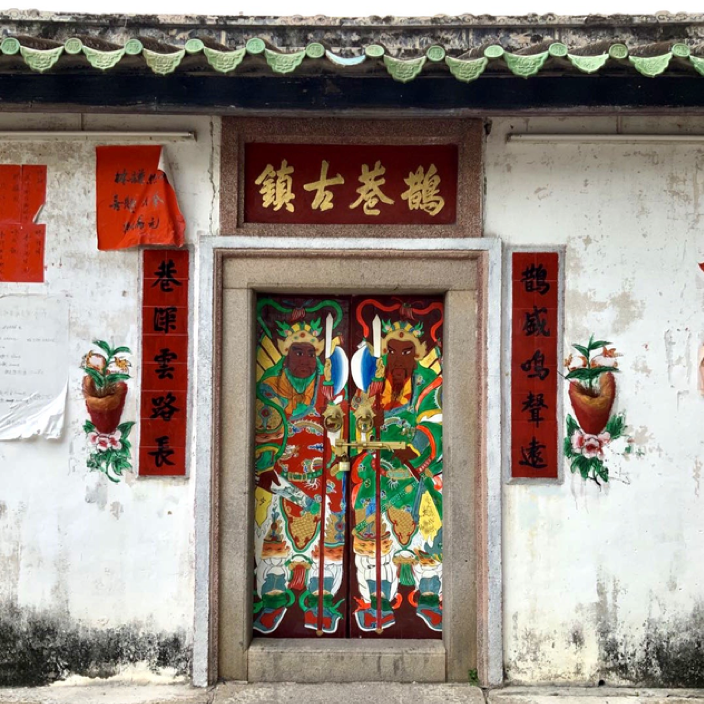Cultural Beliefs and Implication in Architectural Art at Quexiang Ancient Temple, Chaoshan, China
DOI:
https://doi.org/10.69598/sbjfa262905Keywords:
Chaoshan Area, Quexiang Ancient Temple, Belief System, Architectural ArtAbstract
Unique folk beliefs are an important part of Chaoshan culture in China, and the typical characteristic of Chaoshan folk beliefs is polytheism. Buddhist and Taoist deities, as well as various local protective gods scattered in rural areas, can all become the main deities worshiped by the people of Chaoshan. People who have made significant contributions can also be the subject of deification and worship and placed in temples for worship. Therefore, the folk belief system in the Chaoshan region has given rise to various temples, which, under the influence of the belief system, exhibit exquisite decorativeart and rich cultural connotations in their architectural styles. The main purpose of this study is to explore the belief system and architectural art expression at the Quexiang Ancient Temple. In the study, research was conducted by means of on-site investigations as well as interviews with residents and community organizations in the vicinity of Quexiang Village, and the collected data were analyzed in detail to carry out the study, revealing the close relationship between the construction of the ancient temple belief system in Chaozhou and the artistic expression of architecture. The research results show that the folk belief system of Quexiang Ancient Temple carries rich cultural connotations and is an important component of community culture, profoundly influencing community management in the Chaoshan region. The architectural art of the Quexiang Ancient Temple showcases various exquisite architectural decoration techniques in the Chaoshan region, gradually making it a proud, outstanding cultural heritage of the Chaoshan region.
Downloads
References
潮州市建设局. (2007). 潮州古建筑. 中国建筑工业出版社.
陈碧笙. (1989). 南洋华侨史. 江西人民出版社.
陈晓东、适庐. (2011). 潮汕文化精神. 暨南大学出版社.
陈泽泓.(2001). 潮汕文化概说. 广东人民出版社.
黄挺. (1997). 潮汕文化流源》. 广东高等教育出版社.
李煜群. (2015). 潮州传统建筑格局与吉祥图案释义. 花城出版社.
巫乐华. (1997). 南洋华侨史话. 商务印书馆.
杨锡明. (2009). 海外潮人史话. 中国文史出版社.
叶春生、林伦伦. (2010). 潮汕民俗大典. 广东人民出版社.
郑国浩.(2007). 潮州古建筑. 中国建筑工业出版社.
Chaozhou City Construction Bureau. (2007). Chaozhou Ancient Architecture. China Architecture & Building Press. [in Chinese]
Chen, B. (1989). History of Overseas Chinese in Nanyang. Jiangxi People's Publishing House. [in Chinese]
Chen, X & Shi, L. (2011). Chaoshan Cultural Spirit. Jinan University Press. [in Chinese]
Chen, Z. (2001). An Overview of Chaoshan Culture. Guangdong People's Publishing House. [in Chinese]
Huang, T. (1997). The Origin of Chaoshan Culture. Guangdong Higher Education Publishing House. [in Chinese]
Li, Y. (2015). Interpretation of the Traditional Architectural Layout and Auspicious Patterns of Chaozhou. Huacheng Publishing House. [in Chinese]
Wu, L. (1997). Nanyang Overseas Chinese History. Commercial Press. [in Chinese]
Yang, X. (2009). History of Overseas Trendsetters. China Literature and History Publishing House. [in Chinese]
Ye, C. & Lin, L. (2010). Chaozhou Folk Customs Encyclopedia. Guangdong People's Publishing House. [in Chinese]
Zheng, G. (2007). Ancient Architecture of Chaozhou. China Architecture & Building Press. [in Chinese]

Downloads
Published
How to Cite
Issue
Section
License
Copyright (c) 2023 © by the Author(s) & Silpa Bhirasri Journal of Fine Arts.

This work is licensed under a Creative Commons Attribution-NonCommercial-NoDerivatives 4.0 International License.
The journal's editorial team does not have to agree with the views and comments in the author's article, nor are they responsible for the comments.











